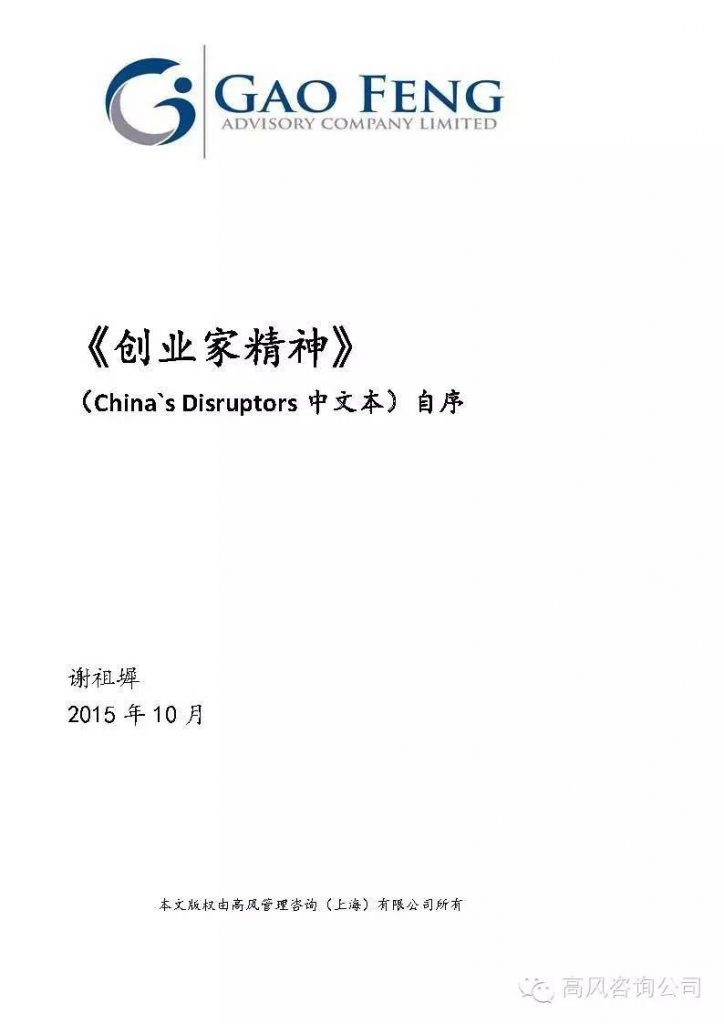
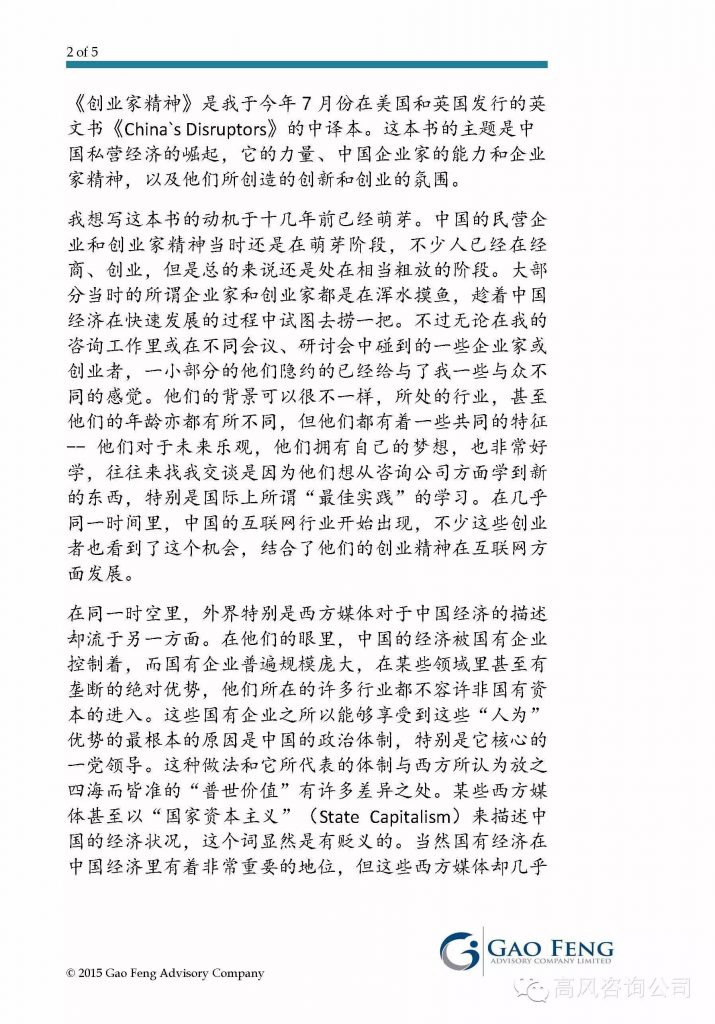
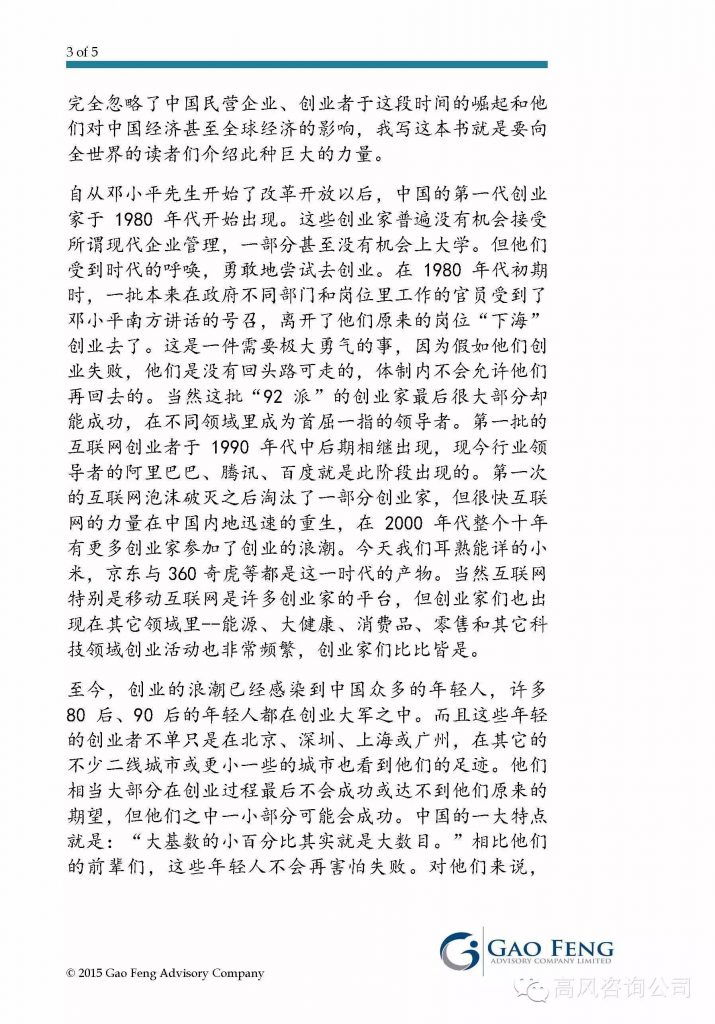
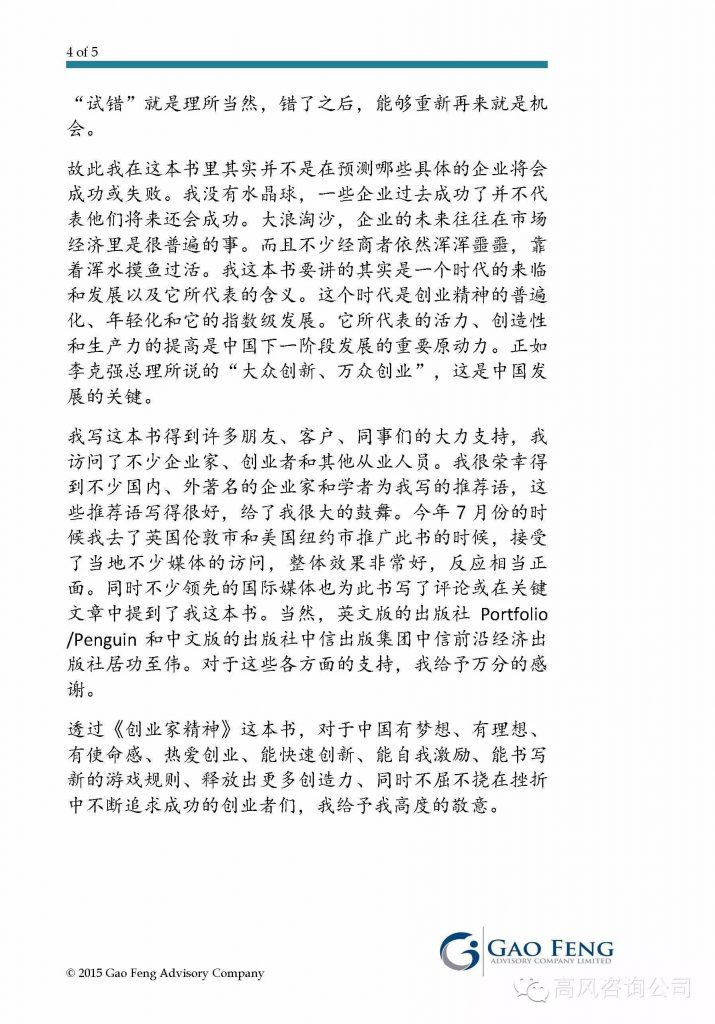
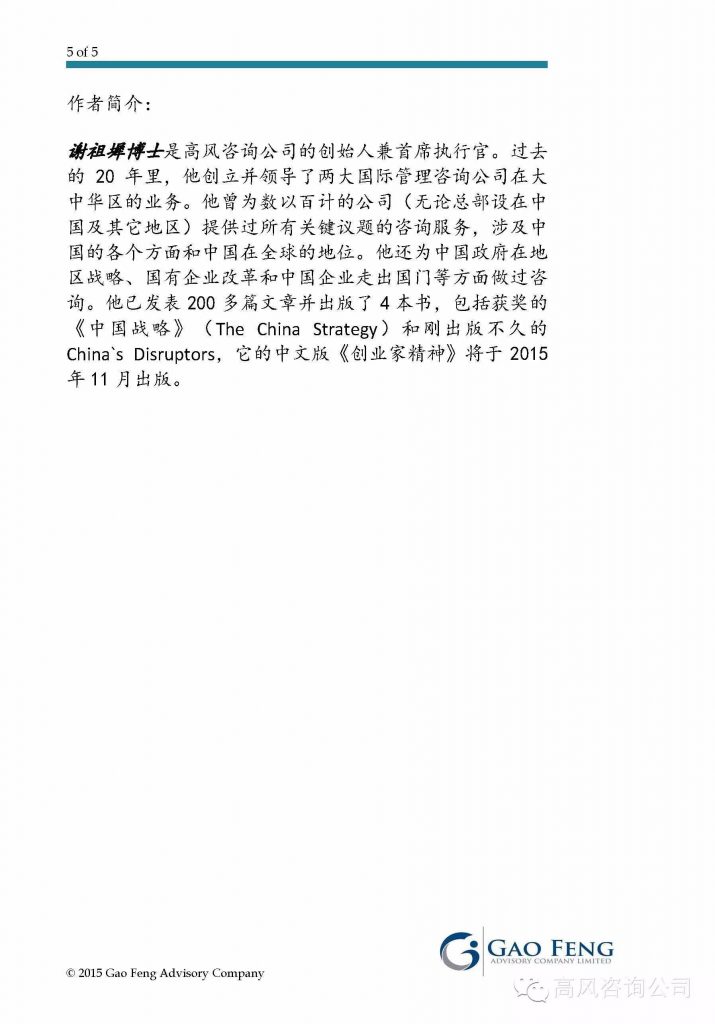
SCMP | How Foreign Tech Companies Go Local Survive and Thrive in China

By Edward Tse & Matthias Hendrichs
Updated 2015-10-15
The “Great Firewall” can limit foreign tech companies’ activities in China. For some, this represents an inconvenience while, for others, it represents a challenge on deemed values and principles.
Many foreign tech companies are taking a closer look at China again. During the recent visit of President Xi Jinping to the United States, leading tech firms such as Microsoft and Facebook sought discussions with the Chinese leader. Even Google, which was not invited to the events, is rumored to be contemplating a return to China. Over the past few years, many people have come to believe that local companies have risen to occupy leading positions in the growing, lucrative Chinese internet industry simply because foreign tech companies were blocked from the market. However, real-life examples present a different case.
In 2003, for instance, eBay entered the Chinese market by acquiring the then leading Chinese platform for consumer-to-consumer auctions, EachNet. But, by 2006, eBay decided to shut down its Chinese EachNet site. By failing to understand the local market context and choosing to migrate everything to the global eBay platform, eBay forced its Chinese customers to suffer a degrading user experience while its competitor Alibaba, with a new platform called Taobao, moved in the exact reverse direction and enabled its customers to dictate many new terms over the same period of time. Besides allowing users to exchange messages, Alibaba created Alipay, an escrow payment service that provides convenient, secure online payment, at a time when online credit or debit card payments were not common in China.
eBay’s lack of success in China is not a result of a ban or government protection for local competitors. Rather, the problem was how the company ran its Chinese business. Not understanding the Chinese market made it hard to win over local customers.

eBay forced its Chinese customers to suffer a degrading user experience while its competitor Alibaba, with a new platform called Taobao, moved in the exact reverse direction.
Google’s retreat from the Chinese market was slightly different. Google China, formally established in 2005, at first complied with the internet censorship laws in China and imposed self-censorship on its search engine until January 2010. Due to tightening censorship and alleged cyber-attacks from Chinese hackers, Google China decided to stop its self-censorship and moved its servers to Hong Kong. Eric Schmidt, Google’s CEO from 2001 to 2011, said in his book How Google Works that senior management views on the move were divided. Schmidt argued that Google should stay in China, while co-founders Larry Page and Sergey Brin strongly favoured a withdrawal due to the censorship.
In this case, government regulation was clearly an important factor. But was it the main reason for Google’s retreat? Every company will have to decide what is right for itself.
LinkedIn, the leading global professional social networking service, is a good example of how to enter the Chinese market. Linked- In officially launched a dedicated Chinese site, Lingying, in February last year, conforming to China’s online censorship regulations. Sequoia China, a venture capital firm that understands the China context, helped LinkedIn navigate the local competitive dynamics and government relations. Instead of hiring a figurehead “China GM” who would merely follow orders from corporate headquarters, LinkedIn decided to hire a “China CEO” who is given a high degree of autonomy to run LinkedIn China like an independent start-up company.
This autonomy enabled LinkedIn China to cater to local needs and to take targeted action addressing those needs. “China only” innovations include the partnership with Tencent’s WeChat, the predominant instant messaging app in mainland China; allowing users to link profiles across both platforms; and the launch of “Chitu” (which literally means “red rabbit”), a mobile-first business social networking app for Chinese users, which is fully independent from the global headquarters.

China is one of Uber’s most important markets. Despite the challenges it faces with the government, it has made China a core of its global strategy.
Following the same principle, Uber, the ride-sharing service, is heavily engaged in China with a strong local organization, competing with local rivals like Didi Kuaidi, which is backed by Alibaba and Tencent. Uber China is set to become a “Chinese” company with Chinese investors, Chinese management and decision rights to act independently from other markets.
China represents one of the most important markets for Uber. In just nine months, three Chinese cities – Chengdu , Guangzhou and Hangzhou – have each accounted for more rides than New York.
Despite the challenges that Uber faces with the local government, it is still committed to the Chinese market and has decided to make it a core of its global strategy.
It is too early to tell whether these companies can succeed over the long run, but at least they seem to be heading in the right direction. The factors that these companies adhere to in China are: understanding the local context, identifying and empowering the local decision rights, seeking local leadership talent, building collaborative ecosystems with the right partners, and building innovative business models to engage with consumers.
Obviously, the “Great Firewall” and China’s censorship rules can limit foreign tech companies’ activities in China, and they are unlikely to go away soon. For some, this represents merely an inconvenience while, for others, it represents a challenge on deemed values and principles.
Clearly, every company will need to judge what is acceptable and what is not. However, a generalization that all foreign tech companies feel the same way and are “blocked” is also far from the full truth.
Edward Tse is CEO, and Matthias Hendrichs Managing Director, of Gao Feng Advisory Company, a global strategy and management consulting firm with roots in Greater China. Dr Tse is author of China’s Disruptors. www.chinasdisruptors.com
This article appeared in the South China Morning Post print edition as The China test
亚布力观点丨管理咨询的关键:问题的界定

文丨谢祖墀 高风咨询创始人兼首席执行官
2015年10月发表于中国企业家论坛《亚布力观点》杂志
管理咨询顾问的工作是为客户解决难题。当然,客户的问题可以有许多种类,有较容易的,有较困难的。一些客户的问题着眼于当前,咨询顾问需要在现有的基础上为客户优化;一些客户的问题却是面向未来的,咨询顾问则需要在快速变化、模棱两可的环境里寻找正确的方向和战略。因客户问题的不同,咨询顾问必须适当地调整方法。假如他们用的方法都是一模一样的,就不可能在每个项目上都取得成功。这往往是咨询公司无法帮到客户的最主要的原因。现在一些咨询公司盲目追求规模化、工业化和模块化,而那些能为客户提供系统性解决难题的咨询公司越来越少。
对于咨询顾问来说,定义问题(problem definition)是咨询过程里最关键的一步,亦贯彻整个咨询项目的工作。当然在客户来找咨询顾问帮助的时候,他必会告诉顾问他要解决的问题是什么。客户说的问题是否就是他真正要解决的问题,在某种程度是一致的,但在很多情况下却并不一致。有些客户可能会特意把问题的定义有意或无意地调整一下。
有些客户并不太清楚他们请来咨询顾问要解决什么问题。在同一个项目里,总裁给的定义,董事长或董事们给的定义,一般员工给的定义可能不同,那在咨询顾问的角度来看,谁讲的算数呢?问题的定义往往会随着客户和咨询顾问之间的沟通和探索而发生变化。对于咨询顾问来说,假如没有明确的将问题定义的能力,没有将此过程当做咨询过程的关键,没有不断地去与客户推敲问题,往往就无法真正为客户解决问题。
咨询公司在问题定义上做得不好,往往就是他们在中国做不好的最基本的原因。因为几乎没有咨询公司会给他们的顾问们做“问题定义重要性”的相关培训,或者有亦是流于表面。就连有些所谓的合伙人亦不知道有此需要,当然结果就往往事与愿违。不少人借此嘲讽外国咨询公司在中国经营的不济,亦所谓“洋咨询,水土不服”。当然这是一个普遍的现象,甚至是比较严重的现象。但同样的,本土咨询公司亦不一定做得特别好。应该说,管理咨询没有华洋之别,只有懂与不懂之分。
有几个案例跟大家分享。大约十年前,有一家跨国的涂料公司来找我们做咨询。他们大中华区的总经理说要做一个战略项目。战略是我们的拿手好戏,我们欣然接受邀请,并一度紧密的工作。在工作过程中,双方都发现了,中国业务的战略其实并不是该公司的核心问题,他们对于自己未来的战略已经相当清楚,他们要解决的其实是组织问题。对于在新旧业务之间产生的错综交杂的关系究竟应该采取什么的组织形态来支撑,这才是核心问题。
大约三、四年前,有一家跨国的消费健康公司来找我们解决组织和运作模型(operating model) 的问题。当我们的团队收到投标书后就开始埋头苦干,准备的建议书有上百页的PPT,内容包括详尽的组织理论、不同组织架构的选择和关键流程的设计。他们给我看之后,我感觉不太对,就找客户( 该公司东北亚区总经理) 聊了一下,按照我们的谈话,我提出了我的观点,就是客户目前所需的还未到建议书上所提的各种细节。客户当前所需的是一套适合他们的“组织哲学”(“organization philosophy”),即是一套适合他们于中国市场上发展的组织原则、方针。在修改了建议书后,我们在遴选中胜了出来,最后项目亦相当成功,这也奠定了该公司在中国快速增长的基础。
在处理了不少成功的案例之余,我亦目睹了一些失败和惨痛的经验。数年前,在某外资咨询公司里,有某团队接了某金融国企的项目。在某外籍合伙人的带领下,经过与客户( 透过翻译) 的沟通,他们将客户的问题定义为“为客户建立一套有差异化的战略以改善顾客的保留率”。在这样简单的了解和假设之下,该咨询公司就派了一支人数不少的队伍进驻客户公司。但是在工作过程中,他们发现客户要解决的并不是战略的问题,而是组织改革和变革管理的问题。这家公司其实希望咨询公司能帮助他们引导各分支机构进行从量到质的改变。这种改变要求咨询公司必须对该企业本身的基本特质、基因和文化有深入的了解,没有深入和广泛的准备,他们根本无法解决问题。所以该项目在超时一年后草草收场。
咨询顾问是为客户服务的,他们必须将客户的利益放在首位,为客户解决最棘手的问题。对于问题的定义是解决难题方法论中最重要的一步。可惜,绝大部分咨询公司连这一步的重要性都不知道。极小部分知道的却没有采取明显的步骤和对员工给予适当的系统性培训。做不好这一步,咨询顾问很难持续地为客户增值。

